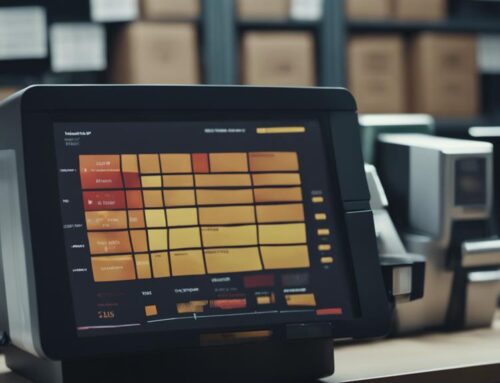Optimize your WooCommerce inventory management with these key strategies: 1) Set precise stock levels and reorder thresholds. 2) Monitor product availability and automate reordering. 3) Analyze sales data and forecast trends. 4) Regularly audit and update inventory quantities. 5) Implement backorder and restocking procedures for out-of-stock items. 6) Strategize using sales trends, reorder points, safety stock, lead times, and alerts for low-stock products. These tactics will enhance operational efficiency and customer satisfaction by ensuring seamless order fulfillment and preventing stockouts.
Setting up Stock Levels
To effectively manage your WooCommerce inventory, begin by carefully setting up stock levels for each product in your store. Establishing reorder thresholds is crucial to ensure you never run out of popular items. Determine the minimum quantity at which you should reorder products to avoid stockouts. By setting these thresholds, you can proactively manage your inventory and prevent disruptions in fulfilling customer orders.
Utilize stock alerts to stay informed about inventory levels. WooCommerce allows you to set up notifications when stock reaches a certain quantity. This feature is beneficial for monitoring products that are selling quickly or those with limited availability. By receiving alerts, you can promptly reorder products before they go out of stock, maintaining a seamless shopping experience for your customers.
Strategically adjusting stock levels and utilizing reorder thresholds and stock alerts will help you optimize your inventory management process, reduce the risk of stockouts, and ensure that your store consistently meets customer demand.
Monitoring Product Availability
Monitor product availability closely to proactively address stock fluctuations and ensure seamless order fulfillment for your customers. Utilizing reordering automation can be pivotal in maintaining optimal stock levels. By setting up automatic reorder points based on historical sales data and lead times, you can streamline the process of restocking products before they run out. This proactive approach minimizes the risk of stockouts and helps in meeting customer demand without delays.
Integrating real-time updates into your inventory management system is crucial for staying informed about stock levels. With real-time data on hand, you can promptly adjust inventory quantities, track product movements accurately, and make informed decisions regarding restocking. This ensures that you always have a clear picture of your inventory status and can take immediate action when necessary.
Tracking Sales and Trends
When tracking sales and trends in your WooCommerce store, analyzing sales data can provide valuable insights into customer behavior and product performance. By forecasting trends based on historical data, you can anticipate demand fluctuations and adjust your inventory levels accordingly. Utilizing these analytical tools strategically can help optimize your inventory management processes and ensure efficient stock levels to meet customer demands.
Sales Data Analysis
Effective inventory management hinges on understanding and utilizing sales data analysis to track sales and identify trends. By delving into customer behavior analysis, businesses can optimize their SKU selection to meet specific demands. Monitoring inventory turnover rates allows for a better grasp of which products are selling quickly and which may need adjustments. Additionally, implementing demand forecasting techniques based on sales data analysis provides insights into potential future trends. Analyzing sales data not only helps in maintaining optimal stock levels but also aids in making informed decisions to enhance overall profitability. By closely examining sales patterns and customer preferences, businesses can streamline their inventory management processes and stay ahead in the competitive WooCommerce market.
Trend Forecasting
To accurately predict future sales trends and optimize inventory levels, businesses must leverage trend forecasting techniques that analyze historical sales data and market trends. Demand forecasting plays a crucial role in anticipating customer needs and adjusting stock levels accordingly. By utilizing advanced analytics tools, businesses can identify patterns and fluctuations in sales data, allowing for proactive inventory management strategies. Inventory optimization is achieved through a combination of accurate demand forecasting and real-time monitoring of market trends. This proactive approach enables businesses to maintain optimal stock levels, reduce overstocking or stockouts, and enhance overall operational efficiency. By continuously tracking sales and trends, businesses can adapt quickly to changing market demands and stay ahead of the competition.
Updating Quantities Regularly
How can you ensure your WooCommerce inventory quantities remain accurate and up-to-date at all times? One effective method is to conduct regular inventory audits and cycle counting. By periodically verifying the actual stock levels against what is recorded in your system, you can identify discrepancies, address errors promptly, and maintain precise inventory records. This process helps in detecting issues such as shrinkage, discrepancies in receiving, or data entry mistakes.
In addition to manual checks, utilizing real-time updates and automation can significantly streamline inventory management. Implementing systems that automatically update stock quantities as sales occur or new inventory is received can help in maintaining accurate records without manual intervention. This not only saves time but also reduces the chances of human error in updating stock levels.
Managing Out of Stock Products
When handling out of stock products in your WooCommerce store, consider implementing backorder strategies to manage customer expectations and maintain sales. Develop efficient inventory restocking procedures to ensure a seamless transition from out of stock to available products. Use out of stock notifications to keep customers informed and potentially offer alternatives to prevent losing sales.
Backorder Handling Strategies
Consider implementing automated notifications within your WooCommerce store to keep customers informed about the status of their backordered products. Effective customer communication is key in managing out-of-stock items. Utilize inventory forecasting to anticipate demand and prevent stockouts wherever possible. When products are on backorder, clearly communicate expected restock dates or offer alternative options to manage customer expectations. Implementing a waitlist feature can also help gauge interest and prioritize restocking efforts. By proactively updating customers on backorder statuses and providing transparent information, you can maintain trust and satisfaction levels. Remember, clear communication and strategic inventory forecasting are crucial components in successfully handling backorders within your WooCommerce store.
Inventory Restocking Procedures
Implement a systematic approach to managing out-of-stock products by establishing efficient inventory restocking procedures within your WooCommerce store. When it comes to restocking your inventory, consider the following strategies:
- Supplier Relationships: Cultivate strong relationships with your suppliers to ensure timely replenishment of stock.
- Reorder Points: Set up reorder points for each product to trigger restocking when inventory levels hit a specific threshold.
- Inventory Audits: Conduct regular inventory audits to identify out-of-stock items promptly and initiate restocking procedures.
- Stock Rotation: Implement a stock rotation system to prevent product expiry or obsolescence and ensure older stock is sold first.
Out of Stock Notifications
Establishing clear and automated out-of-stock notifications can significantly enhance your WooCommerce store’s inventory management efficiency. When products go out of stock, timely customer notifications are crucial to manage expectations and prevent potential order cancellations. Configure stock notifications to alert both customers and your team when inventory levels are low, enabling proactive restocking. Implement inventory alerts that trigger reorder points, ensuring you replenish stock before running out. By utilizing stock notifications effectively, you can streamline inventory management processes, reduce the risk of overselling, and improve customer satisfaction. Remember, proactive inventory management through automated out-of-stock notifications is key to maintaining a well-functioning WooCommerce store. Prioritize customer notifications and inventory alerts to stay ahead in inventory management.
Handling Low Stock Products
To effectively manage low stock products in WooCommerce, prioritize setting up automated alerts for inventory replenishment based on your sales patterns and lead times. This proactive approach ensures you can restock items before they run out, preventing potential sales loss. Here are some strategies to help you handle low stock products effectively:
- Analyze Sales Trends: Regularly review your sales data to identify products that are consistently low in stock. This analysis can help you anticipate future demand and adjust your inventory levels accordingly.
- Set Reorder Points: Determine minimum stock levels for each product to trigger reorder alerts. This ensures you replenish inventory before it reaches critical levels.
- Utilize Safety Stock: Maintain a buffer stock for high-demand items to cover unexpected spikes in sales or delays in restocking.
- Optimize Lead Times: Work closely with suppliers to streamline the reordering process and reduce lead times, ensuring timely replenishment of low stock products.
Frequently Asked Questions
How Can I Prevent Overselling Products on Woocommerce?
To prevent overselling products on WooCommerce, you must prioritize preventing stockouts by mastering inventory forecasting. By analyzing past sales trends and customer behavior, you can accurately predict demand and adjust your stock levels accordingly.
What Are Some Common Mistakes to Avoid When Managing Inventory on Woocommerce?
When managing inventory on WooCommerce, avoid common mistakes like neglecting inventory forecasting, leading to stockouts, or delays. Overlooking timely stock reordering can result in missed sales opportunities. Stay vigilant and proactive for smooth operations.
How Can I Effectively Manage Multiple Warehouses or Locations Within Woocommerce?
To effectively manage multiple warehouses or locations within WooCommerce, utilize location tracking features for precise inventory control. Implement warehouse organization strategies like categorizing products by location for streamlined operations. Stay on top of stock movements to optimize efficiency.
Are There Any Tools or Plugins That Can Help Automate Inventory Management on Woocommerce?
You can streamline inventory management by utilizing inventory automation tools like TradeGecko or DEAR Systems. These tools offer integration options for efficient tracking across multiple locations, providing real-time updates to help you stay on top of stock levels.
How Can I Optimize My Inventory Management Strategy to Improve Overall Sales and Profitability on Woocommerce?
To optimize your inventory management strategy on WooCommerce, focus on forecasting accuracy to anticipate demand and maintain proper stock levels. Strengthen supplier relationships to ensure timely replenishments and reduce stockouts, ultimately boosting sales and profitability.




